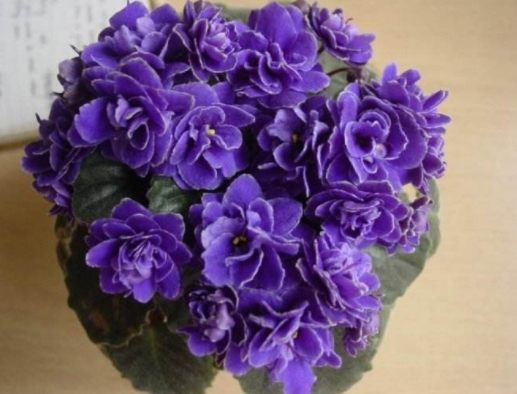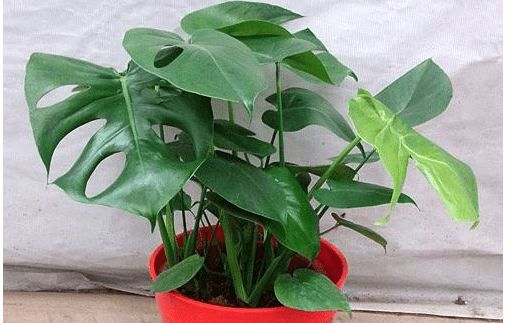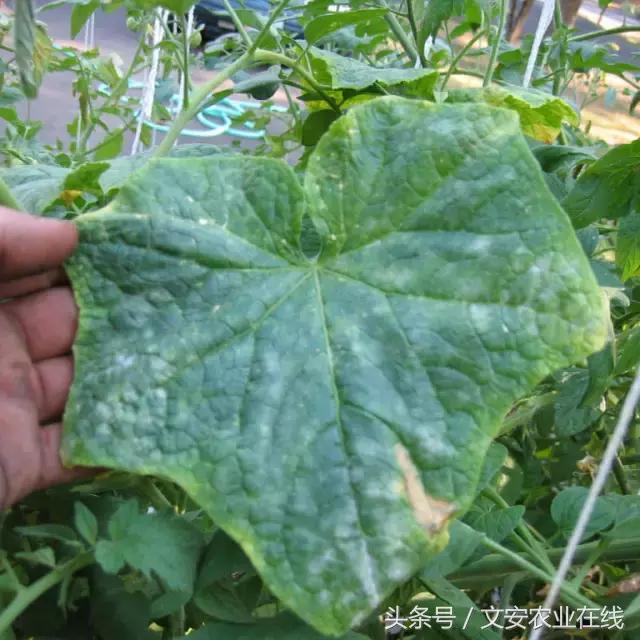Culture method of African Violet
The plant of African Violet is small and beautiful, and it can blossom all the year round. It is an excellent flower cultivated indoors. Many people like it very much. The following editor introduces the breeding methods of African Violet. I hope you like it.

Culture methods of African violets
1. Soil: the basin soil should be loose and fertile, and the soil rich in humus should be used. It is generally mixed with 5 parts of rotten leaf soil, 3 parts of garden soil, 2 parts of rotten stable fertilizer soil, or 6 parts of rotten leaf soil and 4 parts of Gaza loam. it can also be mixed with rotten leaf soil, peat soil and sandy soil.
2. Watering: watering is very important, low temperature in early spring, watering should not be too much, otherwise stems and leaves are easy to rot and affect flowering. Summer high temperature, dry, should be more watering, and spray water to increase air humidity, otherwise pedicel sagging, florescence shortened. However, when spraying water, the leaves spatter too much water, which will also cause the leaves to rot. In autumn and winter, when the temperature drops, watering should be reduced appropriately.
3. Sunlight: African violets need a light source with an intensity of about 20000ft candlelight and an exposure time of about 80012 hours. If you want to promote flowering, you can gradually extend the illumination time to 16 hours. The intensity of outdoor direct light is often greater than 8000 feet of candlelight, which is easy to cause sunburn of plant leaves and is not suitable for African violets to grow. However, the provision of indoor light is often insufficient, so that the plant grows slowly, does not blossom or grows too much.
4. Temperature: like warmth, the suitable temperature for growth is 16: 24 ℃, 18: 24 ℃ from April to October, 12: 16 ℃ from October to April of the following year. The daytime temperature is no more than 30 ℃, and the high temperature is disadvantageous to the growth of African violets. The night temperature in winter is not lower than 10 ℃, otherwise it is easy to suffer frost injury.
5. Fertilization: fertilization should be light. During the period of growth and development, rarefied mature liquid fertilizer or compound fertilizer combined with nitrogen and phosphorus should be applied once every 10 days, but it should be noted that the nitrogen fertilizer should not be too much, otherwise the leaves will grow luxuriantly but bloom rarely. For this reason, 1:1:1 is the best ratio of nitrogen, phosphorus and potassium fertilizer.
6. Insect pests: Fusarium wilt, powdery mildew and leaf rot are easy to occur under high temperature and humid conditions. 1000 times of acetic acid solution of 10% antimicrobial agent can be sprayed or infused into basin soil. Scale insects and red spiders often harm African violets during the growing period and can be sprayed with 1000 omethoate EC.
Notes on African Violet
1. Selection of pots and substrates: due to the small root group of violets, the pots should not be too large when planting, and the corresponding pots should be selected according to the plant size. The substrate of potted plants requires loose, fertile, well-drained, neutral and slightly acidic soil.
2. Watering and fertilization: the amount of water should be determined according to the growing season, winter and early spring, the temperature is low, watering should not be too frequent, and the basin soil should be watered after it is dry, and the relative humidity should be kept at about 40%; the temperature should be high in summer, and the relative humidity should be sprayed frequently. The relative humidity is not less than 70%; in autumn, watering decreases with the cool climate. In the growing season, thin and rotten cake fertilizer or liquid fertilizer should be applied every two weeks, but it should be noted that nitrogen fertilizer should not be excessive. After the appearance of flower buds, 0.5% calcium superphosphate was applied twice to make the flowers bright. Be careful not to touch the leaves to avoid decay when watering and fertilizing.
3. Temperature and light: the suitable temperature for the growth of violets is 1824 ℃. In summer, the temperature can not exceed 30 ℃, so it is necessary to take shading, cooling and humidifying measures, can not be exposed to strong light, but can not grow too long in excessive shade, resulting in fewer flowers, light color, or even no flowering. Family flower cultivation can be cultivated in a place with scattered light and ventilation. The temperature should not be lower than 10 ℃ in winter.
4. Pay attention to the prevention and control of diseases and insect pests: root rot, crown rot, powdery mildew, aphids, mites, thrips, nematodes and other hazards are easy to occur in cultivation. Attention should be paid to ventilation and disinfection before the use of cultivation substrates. When the above diseases and insect pests are found, the relevant chemicals should be sprayed in time.
The purification effect of African violets African violets are short and can blossom all the year round, with leaves as thick as velvet, beautiful and elegant flowers, rich and colorful flowers, and are excellent ornamental plants indoors. Indoor placement can purify indoor air, improve indoor air quality, beautify the environment, reconcile mood and relieve stress. It is also an ideal material for horticultural therapy.
Time: 2019-05-10 Click:
- Prev

Family culture methods and precautions of Tortoise
Turtle is a green plant that can be used for radiation protection. It is a green plant that we really need, it is beautiful and straight, with an elegant and clean feel. It won the favor of many friends. The following small series introduces the methods and precautions of turtle family breeding, hoping to help everyone.
- Next

How to solve plant diseases
Plant Disease knowledge (Collection Edition) distinguishing between fungal, bacterial and viral diseases is very important for prevention and treatment, especially for the prevention and treatment of chemicals. Different agents can control different diseases, and fungicides may not prevent the virus.
Related
- Fuxing push coffee new agricultural production and marketing class: lack of small-scale processing plants
- Jujube rice field leisure farm deep ploughing Yilan for five years to create a space for organic food and play
- Nongyu Farm-A trial of organic papaya for brave women with advanced technology
- Four points for attention in the prevention and control of diseases and insect pests of edible fungi
- How to add nutrient solution to Edible Fungi
- Is there any good way to control edible fungus mites?
- Open Inoculation Technology of Edible Fungi
- Is there any clever way to use fertilizer for edible fungus in winter?
- What agents are used to kill the pathogens of edible fungi in the mushroom shed?
- Rapid drying of Edible Fungi

